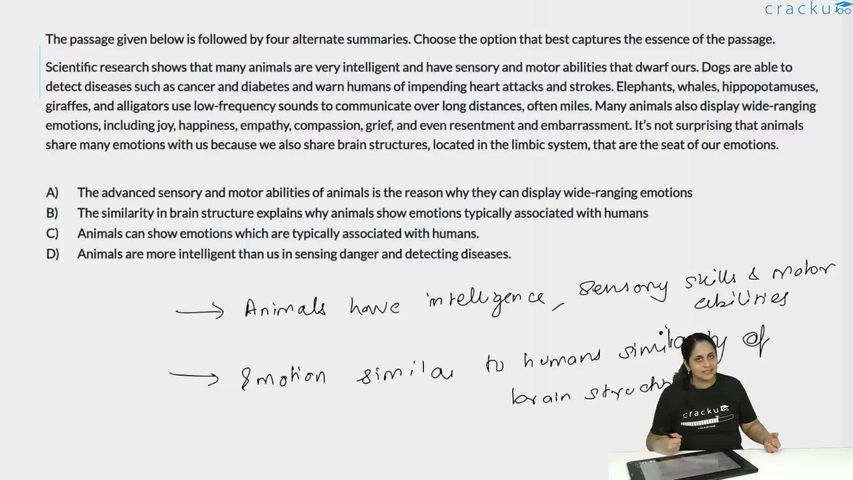Sign in
Please select an account to continue using cracku.in
↓ →
The passage given below is followed by four alternate summaries. Choose the option that best captures the essence of the passage.
Scientific research shows that many animals are very intelligent and have sensory and motor abilities that dwarf ours. Dogs are able to detect diseases such as cancer and diabetes and warn humans of impending heart attacks and strokes. Elephants, whales, hippopotamuses, giraffes, and alligators use low-frequency sounds to communicate over long distances, often miles. Many animals also display wide-ranging emotions, including joy, happiness, empathy, compassion, grief, and even resentment and embarrassment. It’s not surprising that animals share many emotions with us because we also share brain structures, located in the limbic system, that are the seat of our emotions.
Option B is the correct answer.
The paragraph states that animals share many emotions with humans, such as joy, happiness, empathy, and grief, because of shared brain structures, particularly in the limbic system, which is responsible for emotions in both humans and animals. This is the key point that ties together animals' intelligence and emotional capacity, as discussed in the passage.
Option A: The passage does not attribute emotions to sensory and motor abilities. The emphasis is on brain structures, not sensory abilities.
Option C: While the passage states that animals share emotions with humans, this option fails to capture the reason behind this, i.e. shared brain structures. It misses the point that makes the emotional similarity possible, which is central to the passage's message.
Option D: The passage discusses animals' sensory abilities but does not suggest that their intelligence is superior to humans'.

Click on the Email ☝️ to Watch the Video Solution
Create a FREE account and get:
Educational materials for CAT preparation